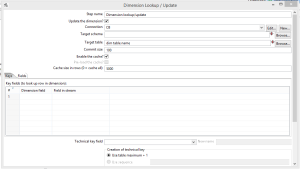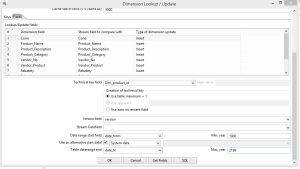Slowly Changing Dimension in Pentaho Data Integration(Kettle)
Slowly changing dimension(SCD) is a common mechanism in Datawarehousing concepts. The exact definition of SCD is the dimension that changes slowly over a time rather than on a regular schedule. In Data Warehouse there is a need to track changes in dimension attributes in order to report historical data. In other words, implementing one of the SCD types should enable users assigning proper dimension’s attribute value for given date. There are various approaches to deal with the data using SCD. The most commonly used approaches are:
Make data easy with Helical Insight.
Helical Insight is the world’s best open source business intelligence tool.
1. SCD Type-I : Update the existing record(Overwrite)
2. SCD Type-II: Creates a new record and set the flag of the new record(historical).
3. SCD Type- III: Creates a new column which keeps the last updated record. Here the history is limited.
In kettle, there are components through which we can implement SCD on the dimension. One such component is the dimensional lookup/update.
The dimension lookup/update component allows to perform the Type-I and Type-II approach of SCD.
Keys:The keys are used to lookup the values with the destination table(dimension).
Technical key: It is basically the surrogate key which will be created if a new record is found.
Fields: The fields columns are the fields that are present on the dimension table on which you want to perform operations.A number of optional fields (in the “Fields” tab) are automatically managed by the step. You can specify the table field name in the “Dimension Field” column.
Type of Dimension update:
Insert: This is SCD-II mechanism where the a new row is inserted if changes are found based on the lookup. If the new record coming from the source table is not found then it will insert. if the changes are found on the table based on the lookup values, a new record is inserted.
Update: This is a conventional SCD-I approach . These attributes in the last dimension record version are updated. If we keep all the fields as Update then it performs SCD-I approach. If some of the fields are Insert and some are update then it applies SCD-II and the fields in which Update is applied will only update the data based upon the last version.
Punch Through: This mechanism is applied on those fields where the data changes very rarely and if it changes it is just a correction. For example, in case of names of the products or null values in price columns. It is also used for SCD_I but its slower than the update mechanism.
Note: If u mix Insert,update and punch through in one dimension, it works like hybrid slowly changing mechanism which is of type-6.
Date of last insert or update (without stream field as source) : adds and manges a Date field.
Date of last insert (without stream field as source) : adds and manges a Date fieldDate of last update (without stream field as source) : adds and manges a Date field.
Make data easy with Helical Insight.
Helical Insight is the world’s best open source business intelligence tool.
Last version (without stream field as source) : adds and manges a Boolean field. (converted into Char(1) or boolean database data type depending on your database connection settings and availability of such data type). This acts as a current valid dimension entry entry indicator for the last version: So when a type II attribute changes and a new version is created (to keep track of the history) the ‘Last version’ attribute in the previous version is set to ‘False/N’ and the new record with the latest version is set to ‘True/Y’.
Note: This dimension entry is added automatically to the dimension table when the update is first run. If you have “NOT NULL” fields in your table, adding this empty row and then the entire step will fail! So make sure that you have a record with the ID field = 0 or 1 in your table if you don’t want PDI to insert a potentially invalid empty record.
This component will work faster if you apply the caching mechanism. A cache size of 0 caches as many rows as possible and until your JVM runs out of memory. Use this option wisely with dimensions that can’t grow too large. A cache size of -1 means that caching is disabled.
Note: There are various other components which can perform SCD in kettle. The Insert/update can also be used which performs SCD-II mechanism. If a new record is found then it will insert or else it will update the dimension. Similarly, the Update step performs SCD-I mechanism. However these components are very slow compared to dimension lookup/update. Similarly, you can use Merge Join(Diff) and then use Synchronise after merge which also performs SCD mechanism. This is fastest among all the above but however the number of records on both the dimension and staging should be same otherwise it wont work.
Thanks,
Nitish

Best Open Source Business Intelligence Software Helical Insight is Here



